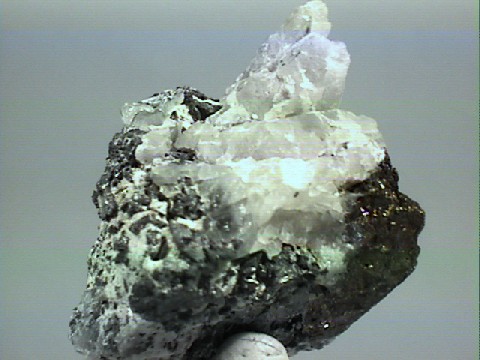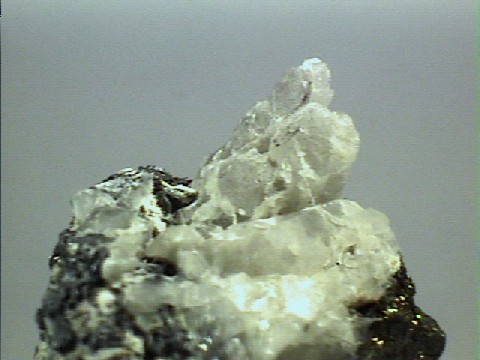 THE
MINERAL SAFFLORITE
THE
MINERAL SAFFLORITE
- Chemistry: (Co, Fe)As2, Cobalt Iron Arsenide.
- Class: Sulfides
- Subclass: Arsenides
- Group: Marcasite and Lollingite
- Uses: As a very minor ore of cobalt and arsenic and as mineral specimens.
Specimens
Safflorite is a near dimorph with the mineral
PHYSICAL CHARACTERISTICS:
- Color is tin white (darkens upon exposure to air).
- Luster is metallic.
- Transparency: Crystals are opaque.
- Crystal System is orthorhombic; 2/m 2/m 2/m
- Crystal Habits include tiny tabular to prismatic crystals and fibrous masses (sometimes radially fibrous). Also compact and massive. Twins are seen as star shaped trillings.
- Cleavage is indistinct.
- Fracture: Conchoidal.
- Hardness is 4.5 - 5
- Specific Gravity is approximately 6.9 - 7.4 (well above average for metallic minerals)
- Streak is a black.
- Associated Minerals include arsenic, cobaltite, arsenopyrite, skutterudite, calcite and erythrite.
- Notable Occurrences include Schneeburg, Harz Mountains, Germany; Great Bear Lake, Ontario, Canada; Lafayette County, Wisconsin and Oregon, USA; Javornik, Czech Republic and the type locality of Nordmark, Varmland, Sweden.
- Best Field Indicators are crystal habits, color (dark tarnish), associations, streak, hardness and density.






